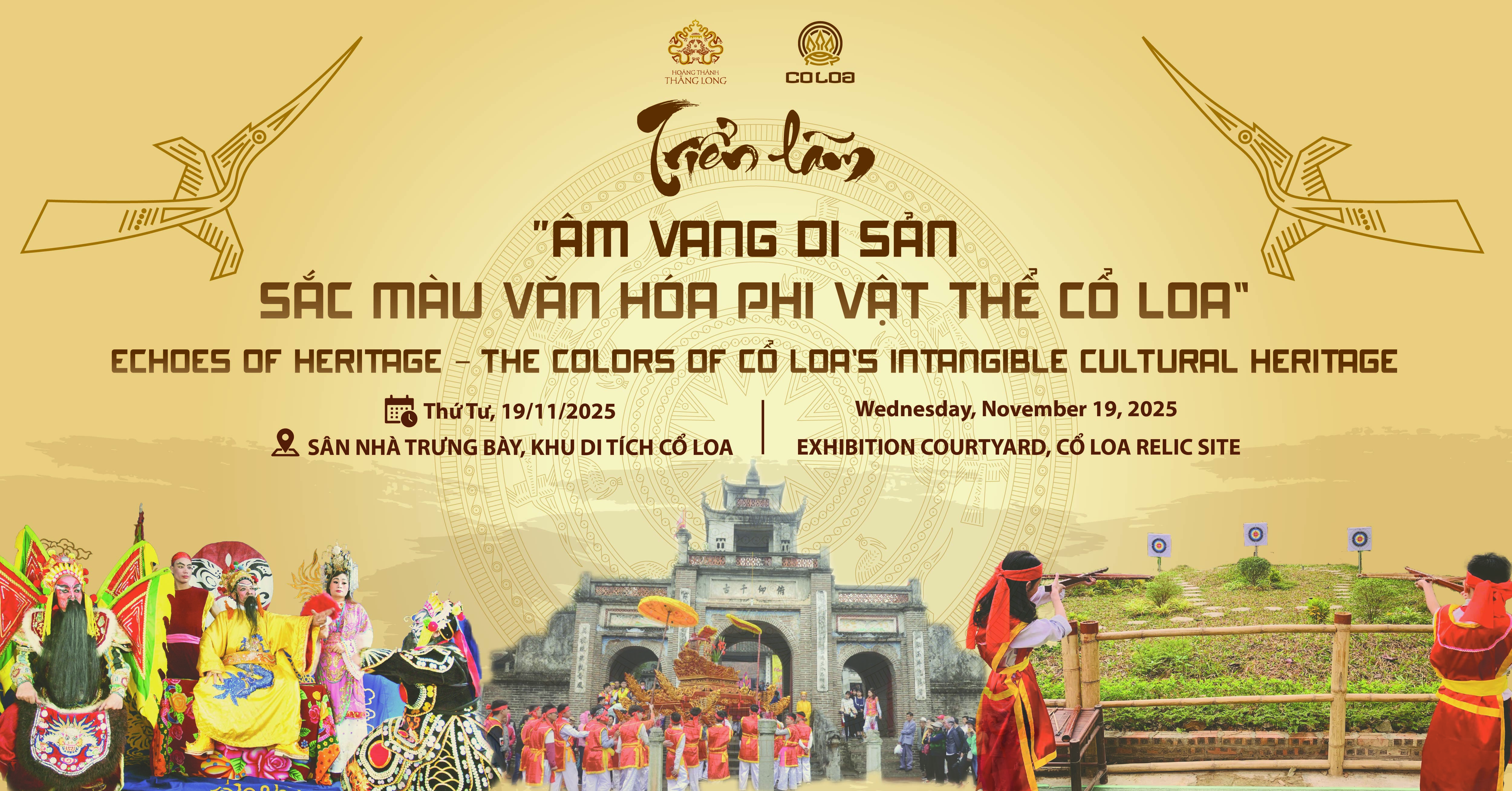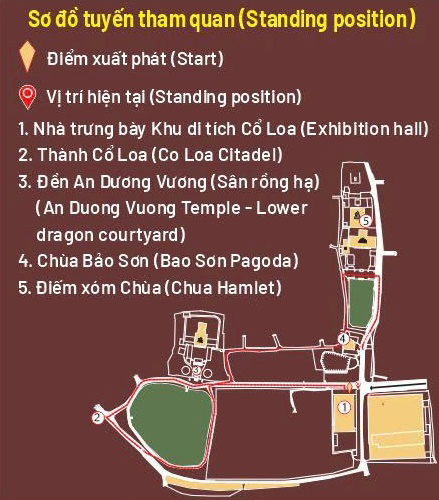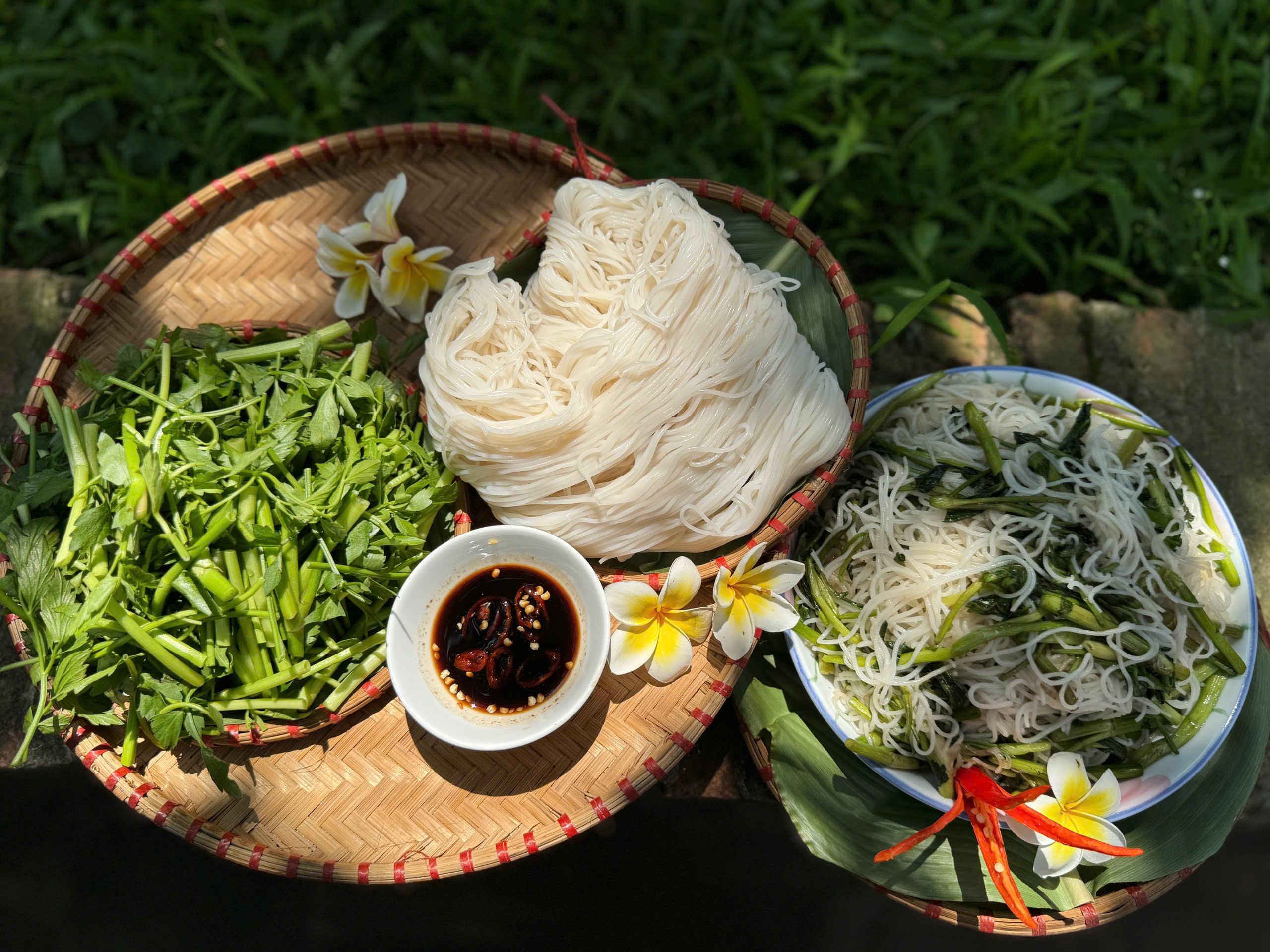
On the occasion of the birthday anniversary of King An Dương (the 11th day of the 8th lunar month recorded in the book "Ngọc phả cổ lục"), we would like to send to you articles about the Statue of King An Dương recognized as National Treasure in 2022. Part 1: Unique original artifacts.
The statue of King An Dương is solemnly worshiped in the sanctuary of Thượng Temple (also known as the temple of King An Dương). Thượng Temple was built in the south direction, on a high mound of land (legend that this was the old foundation of the king's palace), located in the southwest corner of the Internal rampart. The main architectural works of the temple are located on the main road (God road). From top to bottom, according to five different levels including: Sanctuary, Middle hall, Small square pavilion, Forecourt, Upper Dragon yard, “Tả Vu – Hữu Vu” (left house and right house), Stele Pavilion, inner ceremonial gate; lower dragon yard, two dragon eyes, outer ceremonial gate has a pair of stone dragon stair railings that quite typical of the art of the first half of the 18th century; The front yard has 3 stone incense columns and finally the Jade well area. With many layers of gradually increasing architecture, two layers of ceremonial gates have made us think that this temple is arranged in the style of palace architecture, which is very rare in traditional folk architecture of our country.

Đền thờ vua An Dương Vương
King An Dương temlpe
Tượng Đức vua An Dương Vương không có tư liệu, sử sách nào ghi rõ nguồn gốc, xuất xứ, quá trình chế tác, nhưng có nhiều câu chuyện xung quanh nguồn gốc của bức tượng: Tương truyền trong dân gian là trong một lần trùng tu lớn tại đền Thượng vào thế kỷ XVIII đã phát hiện một kho đồng dưới nền điện. Theo các cụ cao tuổi kể lại vào năm 1893, trong lần trùng tu đền Thượng, đào được tại đền Thượng một kho đồng, nhân dân cho rằng, đó là kho đồng thiêng của nhà vua nên đã đem đúc tượng, phục vụ cho việc thờ cúng, tế lễ tại đền. Bức tượng được đúc trong 4 năm, đến năm 1897 thì xong. The statue of King An Dương does not have any documents or history books clearly stating its origin or manufacturing process, but there are many stories about the origin of the statue. According to folk legend, during a major restoration at Thuong Temple in the 18th century, a copper warehouse was discovered under the palace floor. According to the elders, in 1893, during the restoration of Thượng Temple, a bronze warehouse was discovered. People believed that it was the king's sacred bronze warehouse, so they cast statues to serve worship and sacrifice at the temple. The statue was cast for 4 years, and was completed in 1897.Từ chuyện kể dân gian đến những dòng lạc khoản và phong cách nghệ thuật được lưu lại trên pho tượng, có thể khẳng định tượng Đức vua An Dương Vương được hoàn thiện vào năm 1897 là hoàn toàn chính xác, cho dù sự chuẩn bị có thể kéo dài tới 4 năm, như trong dân gian truyền miệng. Các dòng minh văn chữ Hán được khắc và dát vàng: 聖祖安陽皇帝 "Thánh Tổ An Dương Hoàng đế" ở vị trí hộ tâm tròn, mài nhẵn dưới bụng; 丁酉年五月十六日鑄 "Đinh Dậu niên, ngũ nguyệt thập lục nhật chú" (tức là đúc ngày 16 tháng 5 năm Đinh Dậu, 16/5/1897), 銅像二百五十五斤 "Đồng tượng nhị bách ngũ thập ngũ cân" (Nghĩa là: Tượng đồng nặng 255 cân) ở hai “lưỡi xén” sau lưng pho tượng. From folk tales to the inscriptions and artistic style of the statue, it can be affirmed that the statue completed in 1897 is completely accurate, even though the preparation may be lasts up to 4 years, as in oral folklore. The Chinese inscriptions are engraved and plated with gold: 聖祖安陽皇帝"Thánh Tổ An Dương Hoàng đế" in the position of the round center, smoothed under the abdomen; 丁酉年五月十六日鑄"Đinh Dậu niên, ngũ nguyệt thập lục nhật chú" (i.e. cast on May 16, Đinh Dậu year, May 16, 1897), 銅像二百五十五斤Đồng tượng nhị bách ngũ thập ngũ cân" (Meaning: The bronze statue weighs 255 pounds) on the two "shearing blades" on the back of the statue.

"Lưỡi xén" bên phải khắc chữ Hán: "Đồng tượng Nhị Bách ngũ thập ngũ cân"
The " shearing blade" on the right is engraved with Chinese characters:” Đồng tượng Nhị Bách ngũ thập ngũ cân"

"Lưỡi xén" bên trái khắc chữ Hán: "Đinh Dậu niên ngũ nguyệt thập lục nhật chú”
The " shearing blade" on the left is engraved with Chinese characters: "Đinh Dậu niên ngũ nguyệt thập lục nhật chú”
Kể từ khi được hoàn thành cho đến hiện nay, pho tượng vẫn được thờ phụng suốt 126 năm tại đền Thượng, thuộc khu Di tích Quốc gia đặc biệt Cổ Loa là một điều khẳng định thứ hai, khiến cho tác phẩm trở thành một biểu tượng của cộng đồng, không chỉ Cổ Loa, mà còn với nhân dân cả nước.
Since its completion until now, the statue has been worshiped for 126 years at Thượng Temple, part of the Cổ Loa Special National Monument, a second confirmation, making the work a symbol of the community, not only Cổ Loa, but also the people of the whole country.

King An Dương statue
(Photo taken in the period 1920 - 1930; Source: EFEO)
Tượng vua An Dương Vương được đúc bằng đồng là pho tượng duy nhất, chưa từng thấy ở bất cứ di tích thờ An Dương Vương nào trên đất nước ta, kể từ xưa cho đến nay.
Mời các bạn đón xem kỳ 2: Bảo vật Quốc gia – Tượng vua An Dương Vương (Tính độc đáo của hiện vật).
The statue of King An Dương cast in bronze is the only statue that has never been seen at any monument worshiping King An Dương in our country, from ancient times until now.
We invite you to watch part 2: National Treasure - Statue of King An Dương (Uniqueness of the artifact).
MANAGEMENT DEPARTMENT OF THE CỔ LOA VESTIGE SITE








